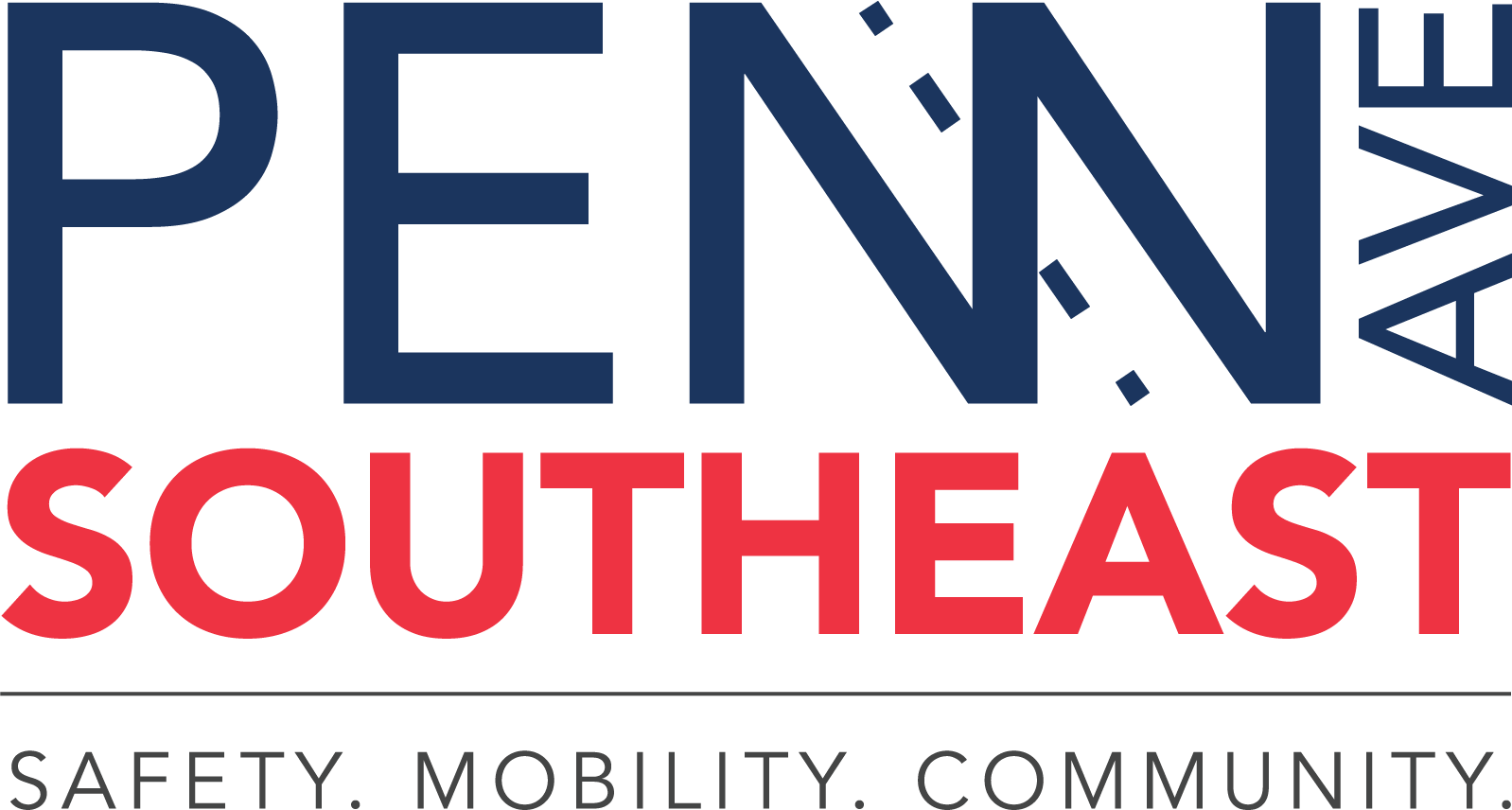What is the purpose of the Pennsylvania Avenue Southeast Corridor Study?
The Pennsylvania Avenue SE project seeks to improve safety for pedestrian, bicycle and vehicular traffic. It will also analyze the feasibility of adding dedicated space for bicycles and bus priority improvements along Pennsylvania Avenue Southeast between 2nd Street SE near the U.S. Capitol and Barney Circle SE, west of the Sousa Bridge.
What are the objectives of the project?
The project intends to:
- Improve transportation safety for the entire corridor
- Provide complementary multi-modal mobility options for all travelers
- Equitably manage curbside space designated for transit, parking, loading and pick-up/drop-off activities
- Meet citywide goals for the moveDC plan and Vision Zero initiatives
- Provide continuous bike lane infrastructure connecting to other existing facilities
- Improve traffic signalization
- Balance bike/pedestrian and traffic movements along the corridor
- Explore opportunities to provide bus priority improvements, including bus lanes
What are the limits of the work?
The project area is the Pennsylvania Avenue SE corridor, bound by 2nd Street SE and the west side of the Sousa Bridge.
What is the Project Schedule?
DDOT is currently working through planning-level analyses, concept development and preliminary engineering. DDOT anticipates completion of the preliminary engineering 30% design in late summer of 2020.
What is a separated or protected bike lane?
Separated bike lanes, also known as protected bike lanes or cycle tracks, provide physical separation within the roadway between people on bikes and motor vehicles, except where vehicles are allowed to make turning movements at intersections or driveways.
What is a bus priority corridor?
Bus priority corridors provide improvements to help make transit faster and more reliable along the District’s busiest bus routes, such as bus lanes, queue jumps and transit signal priority. Bus priority corridors are identified in moveDC, the District’s long-range transportation plan, as a high-capacity transit corridors. They are also identified in WMATA’s Priority Corridor Network. Learn more at https://ddot.dc.gov/page/bus-priority.
Why are separated bike lanes proposed on Pennsylvania Avenue SE?
Separated bike lanes represent an effective transportation infrastructure measure that will address several safety and mobility issues along the project corridor. Pennsylvania Avenue SE is a multi-modal corridor; however, bicycle infrastructure is under-represented within the project area. Currently, this stretch of Pennsylvania Avenue SE is considered “uncomfortable for most bicyclists” based on data used by DDOT to evaluate streets for bicycling quality. Corridor crash data indicates cyclists sharing travel lanes with vehicles are vulnerable to sideswipe collisions. Pennsylvania Avenue SE represents a crucial east-west (and north-south) connection between the National Mall, the neighborhoods of Capitol Hill and Hill East, the Anacostia Riverwalk Trail and neighborhoods in Wards 7 and 8. There are currently four Capital Bikeshare (CaBi) stations along the project corridor.
Implementing separated bike lanes is widely considered a “win-win” measure as they often benefit all roadway users by reconfiguring roadways with space for all users, improve user expectancy, and provide safety benefits. Additionally, as noted above, this project aligns with the District’s citywide goals laid out in moveDC and its Vision Zero initiatives, as well as the recently released list of “20 by 2022” separated bike lane projects.
How will transit service be affected?
The Pennsylvania Avenue SE project’s concept alternatives seek to balance the almost 22,000 daily bus riders on routes that travel along the corridor with other important mobility, safety, and curbside management priorities for the corridor. DDOT has designated Pennsylvania Avenue SE as a bus priority corridor and is working on a complementary plan for enhanced transit service on the corridor. DDOT is also coordinating with WMATA and DC Circulator about the project, including recommendations affecting existing transit facilities.
Is DDOT working with historic preservation groups?
DDOT is informing stakeholder groups including the National Park Service (NPS), Commission of Fine Arts (CFA), the National Capital Planning Commission (NCPC) and State Historic Preservation Office (SHPO).
How will I be able to provide input on the project as a person who lives and/or works in the area?
DDOT will be providing updates at ANC6A, 6B and 6C meetings and hosting public meetings to solicit feedback on the concept design. We also invite people to provide comments on the project website.
Who is the project contact for future questions and how can they be reached?
The project contacts are Mike Goodno and Greg Matlesky who can be reached at mike.goodno@dc.gov and greg.matlesky@dc.gov. You may also contact Karyn Le Blanc at karyn.leblanc@dc.gov.

